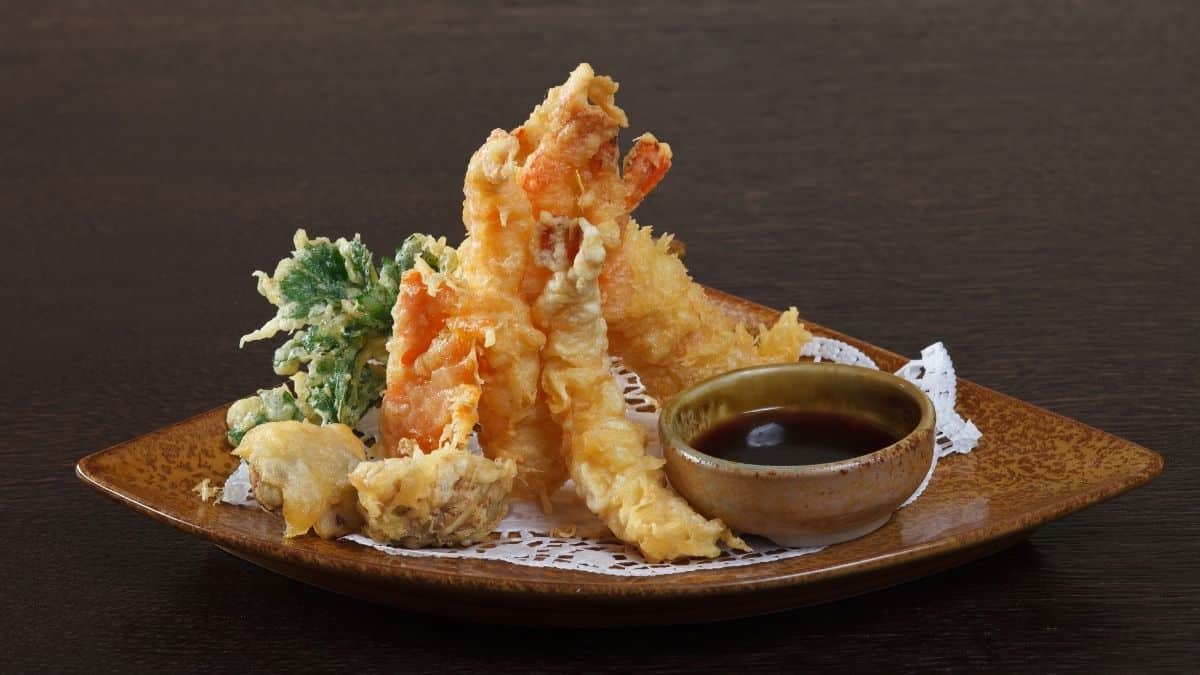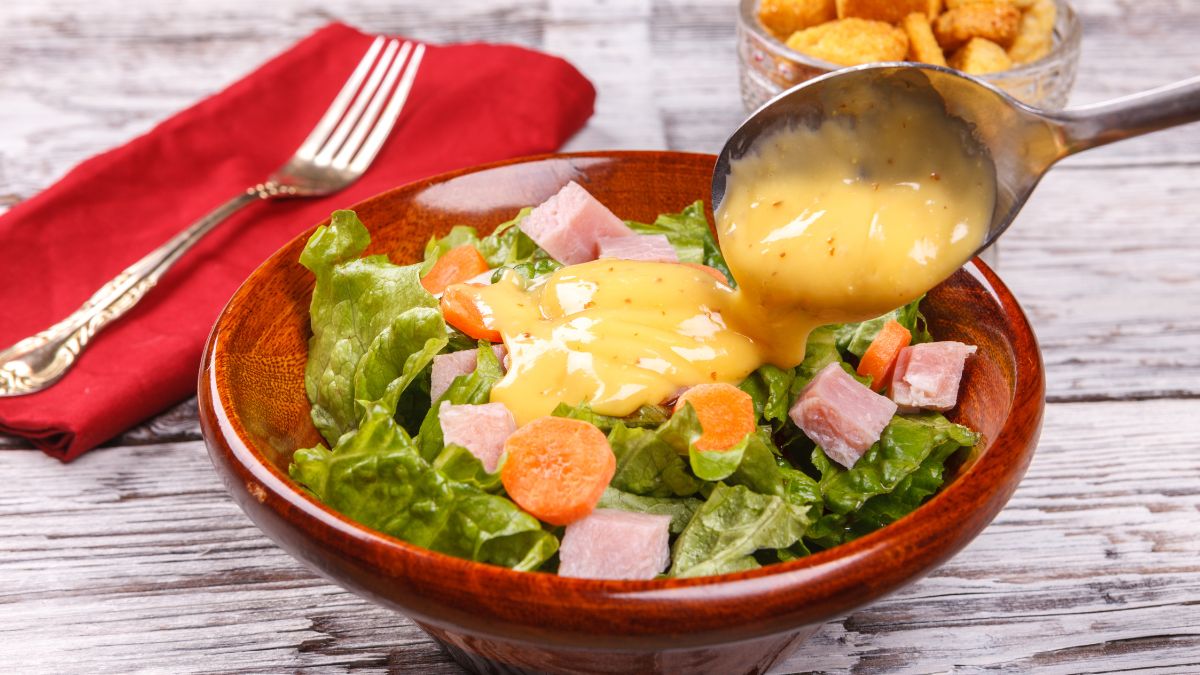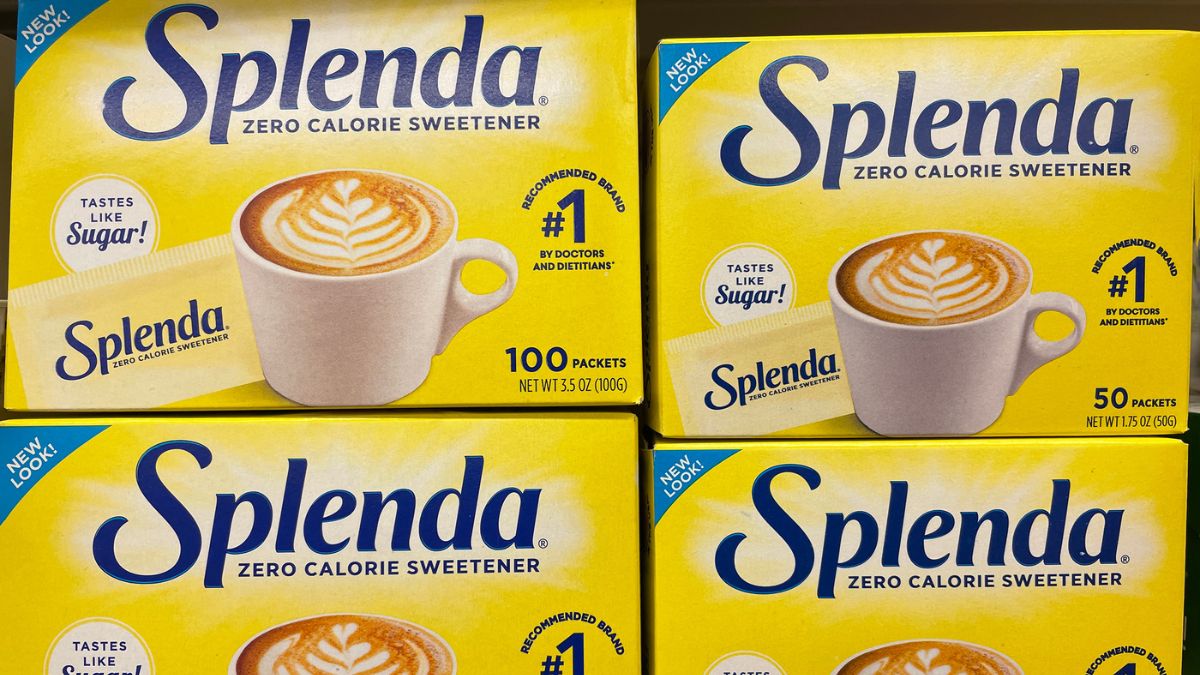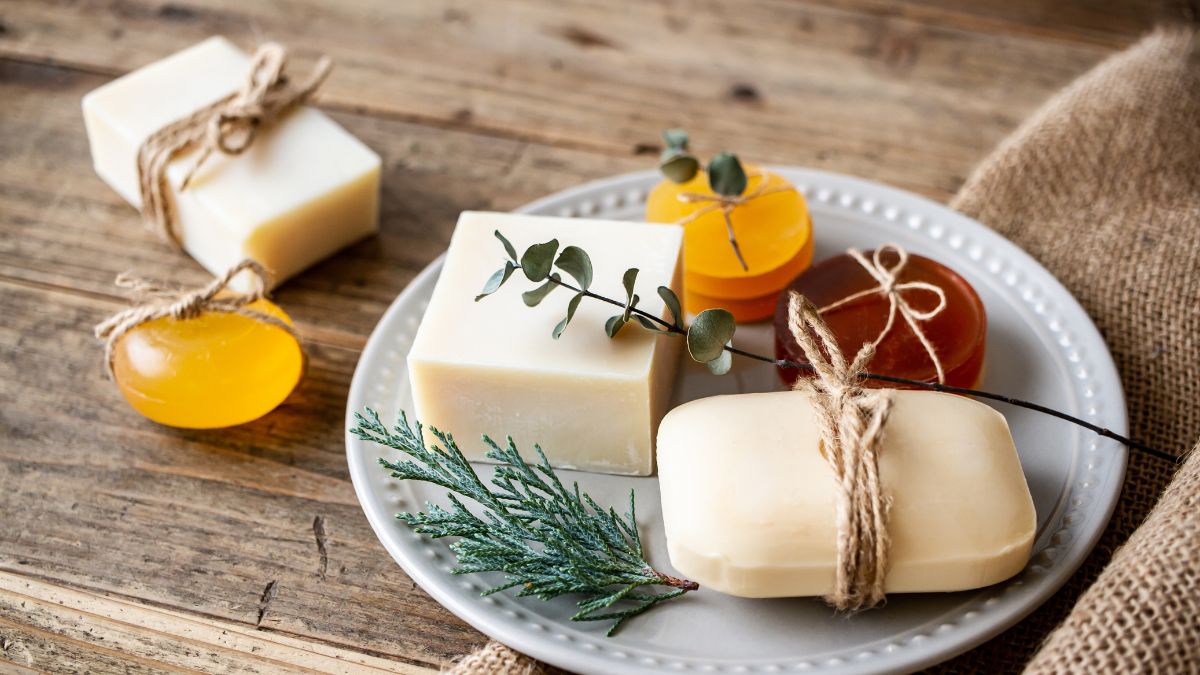Answer: No. Sorry, but traditional tempura is not vegan. It uses eggs added to the batter to coat the vegetables or seafood ingredients.

Is Tempura Vegan?
I looked through my collection of restaurant menus and spotted my favorite Japanese restaurant. Just thinking of biting into a newly cooked and crunchy tempura kakiage or mixed vegetables dipped in tentsuyu soy sauce, and the craving sets in. But wait, is tempura vegan? Is it safe for me to order this for my vegan diet?
To satisfy your tempura craving, look for a vegan diner and cross your fingers that they fry it as well as the Japanese restaurants or, better yet, make the tempura batter yourself.
What Is Tempura?
Tempura is a globally known Japanese dish. It has deep-fried seafood and vegetables coated with a batter to puff it up. The batter is a mixture of flour, water, and egg that gives a flaky and crispy result for a deep-fried dish.
History
The Portuguese introduced tempura in Nagasaki commercial port in the 16th century. The Dutch sold guns and preached Christianity, teaching the locals tempora, a time of abstinence from meat. Another word they would use is tempero, which means seasoning in Portuguese. The Japanese adopted the word and started calling their dish tempura.
The tempura was a luxury food because vegetable oil was expensive. Only during the Edo period did tempura, sushi, and soba become the food of ordinary Japanese. It was a snack food served on a stick and cooked in restaurants because the wooden buildings were in densely packed neighborhoods.
The local chefs adapted the strong Japanese tradition of serving fresh food in its natural state in the 18th century. They began frying vegetables and fish, with careful detail to uniform slicing in thickness and size to avoid over-cooking and under-cooking.
Tempura Batter
Tempura batter has many versions. The traditional Japanese tempura batter uses wheat flour and eggs, while others will mix the batter in plain cold water. Some will use a blend of soft wheat flour and rice flour to increase the crunch, while others will stick to plain rice flour or wheat flour for its lightness.
Tempura Dishes
Tempura is a popular Japanese dish that features a variety of ingredients, including seafood options like shrimp, fish, squid, and oysters. For those wondering, is tempura vegan? Traditional tempura often includes seafood and egg-based batter, making many versions unsuitable for vegans. However, vegetable tempura offers a vegan-friendly alternative, with crispy fried pieces of squash, sweet potato, okra, and eggplant. Another variation, kakiage, blends thinly sliced onions, carrots, and sweet potatoes into a mixed vegetable tempura. Additionally, a batter-only tempura—known as Tanuki—forms a crispy fried topping added to soba noodles. As the food scene evolves in 2025, more vegan-friendly tempura options are becoming available, catering to diverse dietary preferences while celebrating Japanese culinary tradition.
Are Tempura Mixes Vegan?
Yes, the store-bought tempura mixes are plant-based. It uses soft flour or cake flour with baking powder allowing the batter to stick to the ingredient. The choice of flour varies for different chefs. Others use rice flour for its delicate crunch, while others prefer wheat flour for its flavor. There are rarely any flavorings to keep the batter light and crispy.
How To Make Vegan Tempura
There are many recipes to make vegan tempura. You can use soft wheat flour and add starchy flour like cornstarch or potato flour. You can stick to using rice flour alone. But there are two common denominators in all the recipes. One is to use ice-cold liquid, and two is never to mix the batter.
The ice-cold liquid prevents gluten strings from forming. When mixing the cold water, soda, or sparkling water with the flour, use a whisk, chopsticks, or fork to take out lumps. The batter is ready to be used and must proceed to coat the vegetables for frying. Overmixing the batter will make the crust bready in texture once that gluten sets in and absorbs the oil making the batter heavy.
Substitute for Eggs
There are available substitutes for egg yolks or whole eggs in a tempura batter. Some like to use sparkling water because the bubbles give the batter more oxygen during the mixing stroke. Others prefer using club soda because of its bubbly content when mixed with flour.
Best Oils to Use for Tempura
Traditional tempura uses vegetable oil. The other alternatives are olive oil, canola oil, corn oil, peanut oil, sunflower oil, and sesame oil. The temperature will differ from 320°-356°F depending on how fast the vegetable will cook.
If the vegetable ingredient requires a longer cooking time, then a lower temperature is suggested to cook the vegetable evenly. A point to consider is that you will drop a cold batter on the oil, changing the heat of the oil. If your target temperature is 338°F, you have to start to heat the oil as high as 356°-365°F.
Tips on Frying Tempura
The secret to making the perfect crisp tempura is in the frying process. Remember the different tips during frying for you to get the results you want. The sound of the oil when frying is like cider or bubbly newly opened.
Use a cooking thermometer to monitor the oil temperature when vegetables are fried in the oil. If it gets too hot, add extra oil or another vegetable to even it out. If the temperature drops, pause to get the temperature up before dropping another ingredient before you resume frying.
- Take your time to drop the ingredients one by one in batches.
- Do not overcrowd the ingredients when deep frying.
- Half the oil surface should be covered with vegetables.
- Scoop or strain out the crumbs that have burnt before beginning a new batch for frying.
Preparing Vegetables for Tempura
There are no set rules on the kind of vegetables for tempura. But the common vegetables served in Japanese restaurants are squash, sweet potato, white onion, eggplant, okra, bell peppers, shiitake mushrooms, and lotus roots.
Preparing the vegetables must be sliced as uniformly as possible with the same thickness and length. Before dipping in the tempura batter, the vegetables must be pat dry so the coating will stick to the ingredients.
- Squash and sweet potatoes cut ½ inch thick and 3-4 inches long.
- White onions are cut 1 inch thick before taking out the outer cover.
- Eggplant cut in half lengthwise then cut in ¼ inch thick half-moons. Sprinkle with salt and leave for 20 mins to take out juices, then rinse and pat dry.
- Bell pepper is cut lengthwise into strips ½ inch wide.
- Okra is cut in half lengthwise, then the stem is taken out.
- Carrots, lotus roots, and taro roots are cut in cross-sections at ¼ inch thick and 3-4 inches long.
DIY Tempura Batter
Making tempura is all about practice and trying a few times until you succeed. But if you get it right, you can tempura your way to any vegetable you want.
- Place the following ingredients in a bowl. Mix the dry ingredients of ½ cup of rice or wheat flour, 2 tbsp cornstarch, 1 tbsp baking powder, and ½ tsp salt.
- Slowly add the 1 cup of sparkling water while you whisk until combined but not over-mixed. Other alternatives are chopsticks or a fork.
- Dip vegetables into the batter one at a time with an inward sweep on one side, then an outward sweep on the other side to lightly coat it and shake off excess batter.
- In a preheated wok or skillet of 350°F of vegetable oil, fry the tempura vegetables for 1-2 minutes on one side, then flip to fry the other side for another 1-2 minutes in 4 cups of oil.
- An extra pat of hot oil on the vegetable tempura using chopsticks will make it extra crispy.
- Transfer the cooked vegetable to a cooling rack to allow the extra oil to drip and let air under the vegetable for uniform cooling.
Tentsuyu Tempura Dipping Sauce
Tempura is served with a famous dipping sauce called tenstsuyu. Some prefer it slightly sweetened from the mirin wine; others like it sweeter by adding brown sugar.
- Boil in a saucepan 1 cup of vegan dashi, 2 tbsp soy sauce, and ½ tsp salt.
- Remove from the stovetop and mix in 2 tbsp ponzu sauce, 2 tbsp mirin rice wine, and 1 tbsp brown sugar to sweeten.
- Divide into 2-4 bowls and top with freshly grated radish.
Tempura Dishes for Vegans
There are many dishes that vegans can enjoy using the tempura batter. Aside from the plain vegetable sliced tempura, you can experiment with other vegan ingredients. Below are some suggested tempura dishes you can try:
- Tempura tofu uses Japanese soft tofu coated in tempura batter and cooked at 356°F for 3-4 mins. Serve dry or in a bowl with tentsuyu sauce or ponzu dipping sauce.
- Kakiage tempura, or mixed vegetable tempura, is made from thinly cut vegetables of onions, carrots, and sweet potato. It is fried together like a crispy ball.
- Vegan sushi roll tempura is a tempura-fried seaweed roll with sweet vinegar rice with a choice of vegetable filling like shiitake mushroom with spinach, cucumber, and carrot. Another option is avocado, cucumber, and mango. Last is the tofu with bell pepper and carrot.
- Banana tempura is sliced in half and then coated with tempura batter. Top with vegan chocolate sauce, vegan caramel sauce, or cinnamon sugar.




